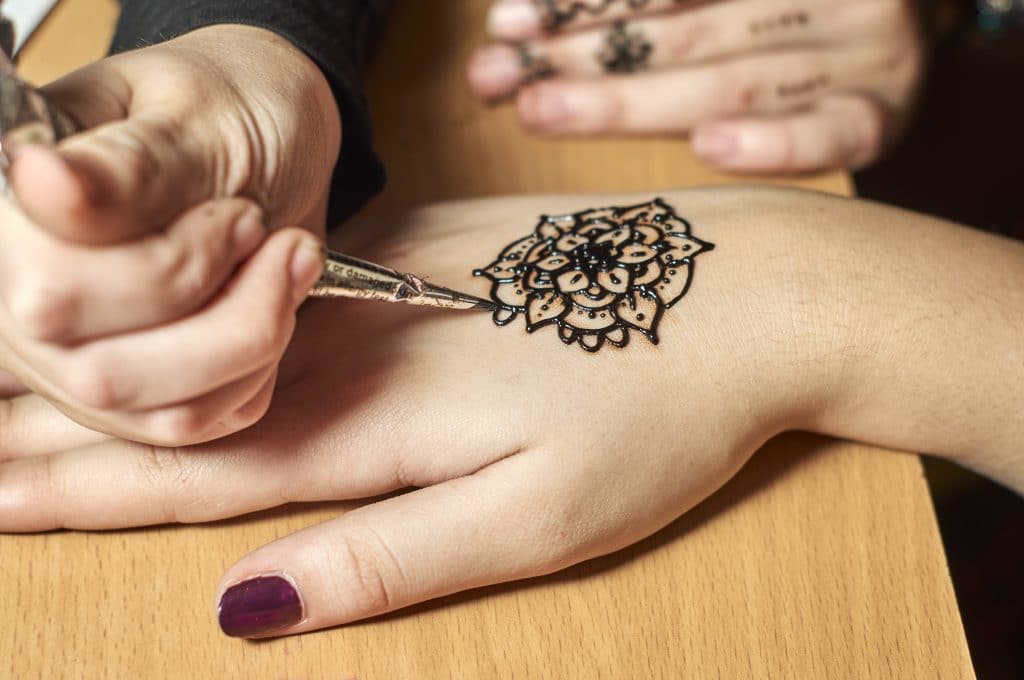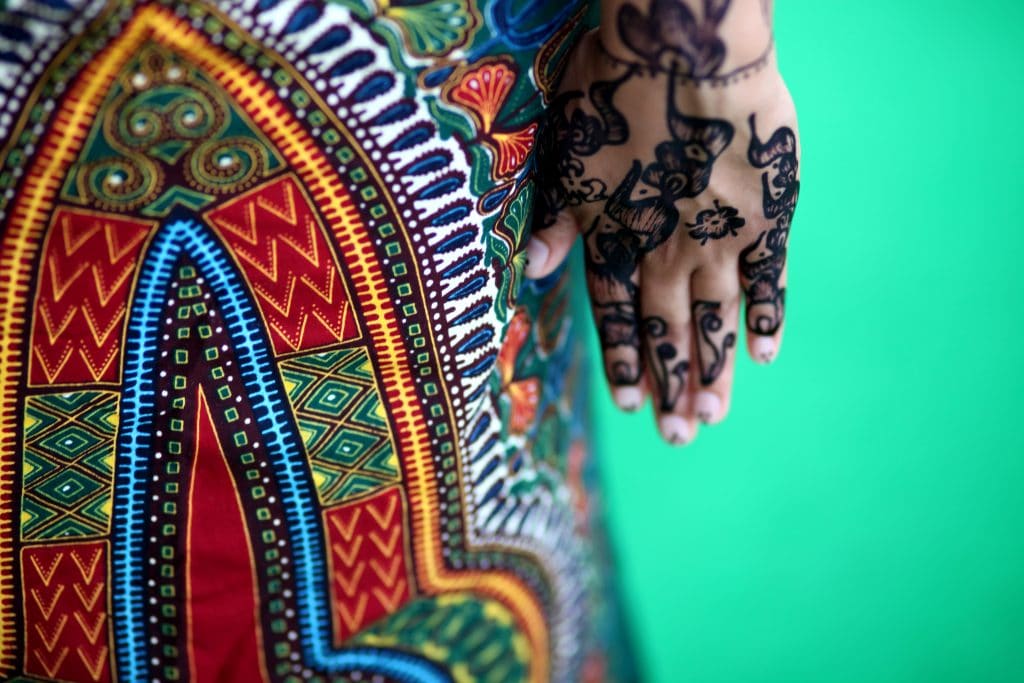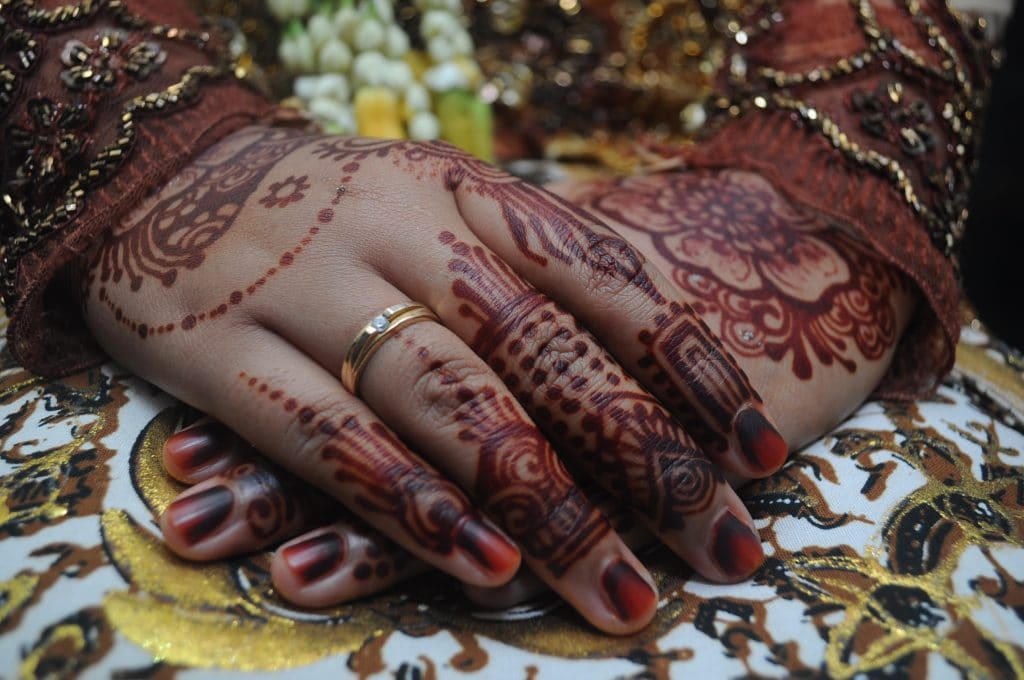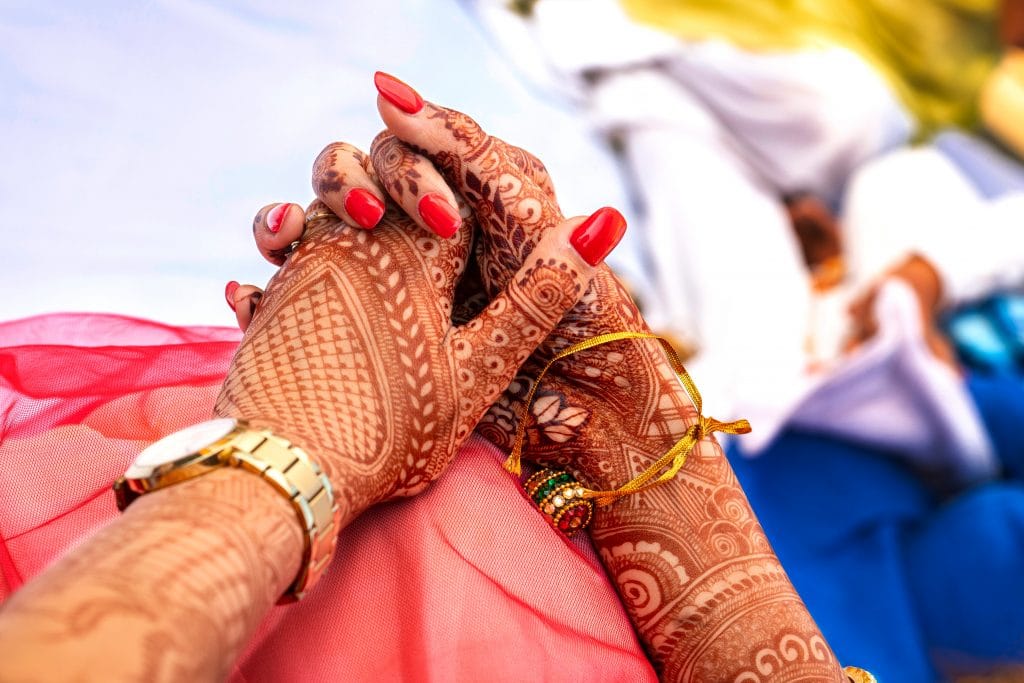A tattoo can make a great statement about you. It is a showpiece of sorts, even if it is not visible to everyone. There are some who choose to have tattoos positioned in intimate places on their body, something that only the most special of people will get to see.
There are also those who would love to get tattoos, but find the process of being stuck with the needle a little too intimidating, maybe even creepy. They simply cannot fathom letting someone pierce into their skin in this way. Too many things worry them about this. Then there are those who would like this tattoo for a particular ritual, but do not wanted to be permanent.
Fortunately, there is a technique that you can use to have incredible tattoos, and it does not require the use of needles. This is the Henna tattoo, which has a fascinating history to it.
What Is a Henna Tattoo?

If you have never heard of this type of tattoo before, then it is time for a little education. These are temporary tattoos. They are created by letting these small flowering shrubs dry, then turning them into a fine powder. That powder is then used to dye your hair or skin, but only temporarily.
While these are only temporary, they give you a lot of flexibility. First of all, many of the most common types of Henna tattoos are ones of flowery designs or intricate vine like designs that look spectacular. It is likely that you have seen these before, but just did not realize what exactly the tattoo was. Some people choose to place these on their arms and hands, while others choose intricate designs across their neck and face.
They are only temporary, but the type of dye you use can leave this impression on your skin for weeks. This gives you the opportunity to stay with a look for a longer duration of time without it being permanent. The best part about the Henna tattoo is that it does not streak or drip whenever you sweat or someone touches you. No concern about your temporary tattoo being uncovered or having the dye transfer to your lover during an intimate moment.
Two Types of Henna

Before diving into the history, it is important to understand that there are two different types of Henna out there. Black Henna ink can be harmful to your skin. This is because it does not use all-natural Henna ingredients. Instead, additional dyes are added, often to increase the longevity of the tattoo. While it may stay around longer, it is not a safe option.
Natural Henna only contains ingredients from the plant itself. It should have a very earthy smell to it and if you have natural Henna that has not been colored anyway, it should appear as a green powder. If the health of your skin is important, make sure you are choosing the natural option.
Where Did Henna Originate?

If you look back at paintings and drawings from ancient societies, you are often going to see depictions of people with Henna tattoos on them. This was especially common among the Egyptians. The tattoos were often ceremonial, but also depicted images that were meant to present a certain status.
This was true in many of the ancient South American cultures as well. Native men and women both used these types of tattoos, often as a way to identify who and what they were within the society. They also often depicted scary imagery that was intended to intimidate opposing combatants.
Their Primary Purpose

The primary reason why people used these tattoos was ceremonial. These were often drawn and colored on people during big events and festivals. This could include such things as weddings, birthdays, and holidays.
In places such as India, Africa, and across the Middle East, brides often used these tattoos all over their bodies. This required several different artists to be working on the same person, and it took many hours for them to complete the task.
In some cultures, brides wanted the tattoos to last as long as possible. In fact, there is a common folk myth that says that a woman did not have to start doing household chores and tell the Henna began to fade. The longer the duration of the tattoos, the better the marriage whistles to be.
In India, this practice is still used today. Women will have Henna tattoos placed around the lower parts of their arms and legs, including on the feet and hands. The drawings and our work are fantastic. They are very decorative and there are several different patterns and colors that a woman can choose. Most often, they are selected to match the garment she will be wearing for the wedding.
The beauty of these tattoos has become famous around the world. Vogue magazine has run several features on the beauty of these tattoos and how they have become a significant part of Indian rituals. The process of designing and placing the tattoo on the woman has become so intricate that even the groom’s family has members observing the process before the marriage.
This is incredibly important, as this is considered a very big part of the marriage. As mentioned, there are still many who believe that the duration of the Henna tattoo will say something about how successful the marriage will be. Therefore, both the bride’s and the groom’s families want to ensure that nothing went wrong.
Not as Common Today

In India, it is still common practice for Henna tattoos to be used in ritual ceremonies and festivals. This is not as true in many of the other cultures of the world. Rarely do you see Egyptians with these types of tattoos, even in elaborate marriage or wedding ceremonies. Most often where you see people using these tattoos is purely for decoration. They are either wanting to accent themselves for fun or are involved in some kind of personal or national celebration where they would like to have certain images depicted on their bodies. Clearly this is taken some of the charm away from the henna tattoo, but they still are beautiful.
